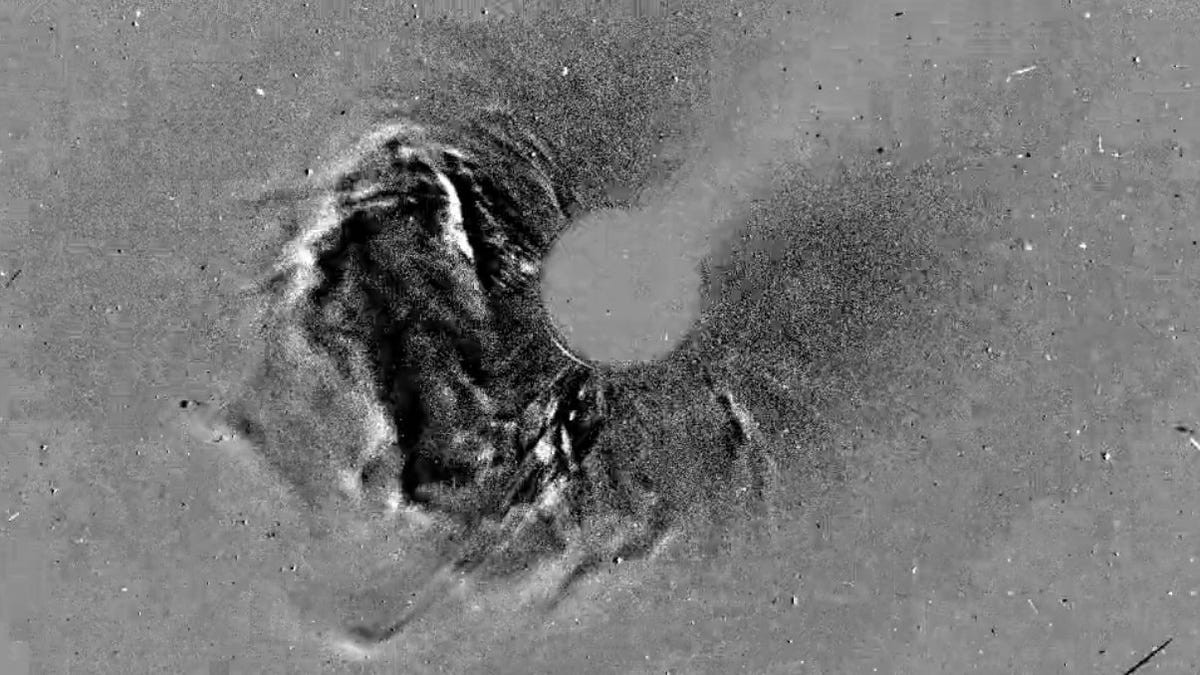
The Solar and Heliospheric Observatory captured footage of the coronal mass ejection on Tuesday.
ESA/NASA/USNRL
![]()
Our closest star’s latest intense expulsion of plasma was captured by sun-watching observatories on Tuesday. The eye-popping footage shows a coronal mass ejection, or CME, which is a blast of plasma and magnetic field from the outermost part of the sun.
Computational scientist Karl Battams with the US Naval Research Laboratory tweeted his impression of the Jan. 3 event, calling it “very pretty.”
Ooh, there was a very pretty coronal mass ejection (CME) seen a few hours ago in our @ESA/@NASA/@USNRL SOHO/LASCO C3 images! ☀️😍 I think it erupted on the far side of the Sun (aka “behind the limb”), so not Earth-directed AFAIK pic.twitter.com/rXCRu6n8gF
— Karl Battams (@SungrazerComets) January 3, 2023
Battams shared a black-and-white video captured by the Solar and Heliospheric Observatory (SOHO) spacecraft. The sun itself is blocked out to better show what’s happening around it. Battams put it into perspective with a follow-up image from SOHO’s Large Angle and Spectrometric Coronagraph (LASCO) instrument. The white circle in the center is the actual size of the sun.
And a nice still frame from LASCO C3.
Keep in mind: that white circle in the center is the size of the Sun… so within just a couple of hours, these eruptions are MANY times larger in size than the Sun, and often with masses ~~10^12Kg 🤯
[orig: https://t.co/Y5j38nh02w] pic.twitter.com/JsFnq56rQs
— Karl Battams (@SungrazerComets) January 3, 2023
The National Oceanic and Atmospheric Administration’s Space Weather Prediction Center analyzed and modeled the CME and concluded that the ejected material will likely pass behind Earth’s orbit on Jan. 6.
That’s good news since the sun’s eruptions can disrupt spacecraft, satellites and communications systems on Earth.
See also…
- Watch a ‘Snake’ Slither Across the Sun’s Surface at Breakneck Speed
- NASA Snaps Portrait of Sun ‘Smiling’ Down on Us Like a Big Fiery Goof
The CME originated from an active region of the sun that was out of sight at the time of the eruption. NOAA expects that spot to rotate into view soon, so we may get a better look at where the outburst came from.
The sun had an eventful 2022 as it unleashed strong solar flares, “smiled” at us and generated a snake-like formation of plasma. It looks like 2023 could be another great year for sun gazing.
